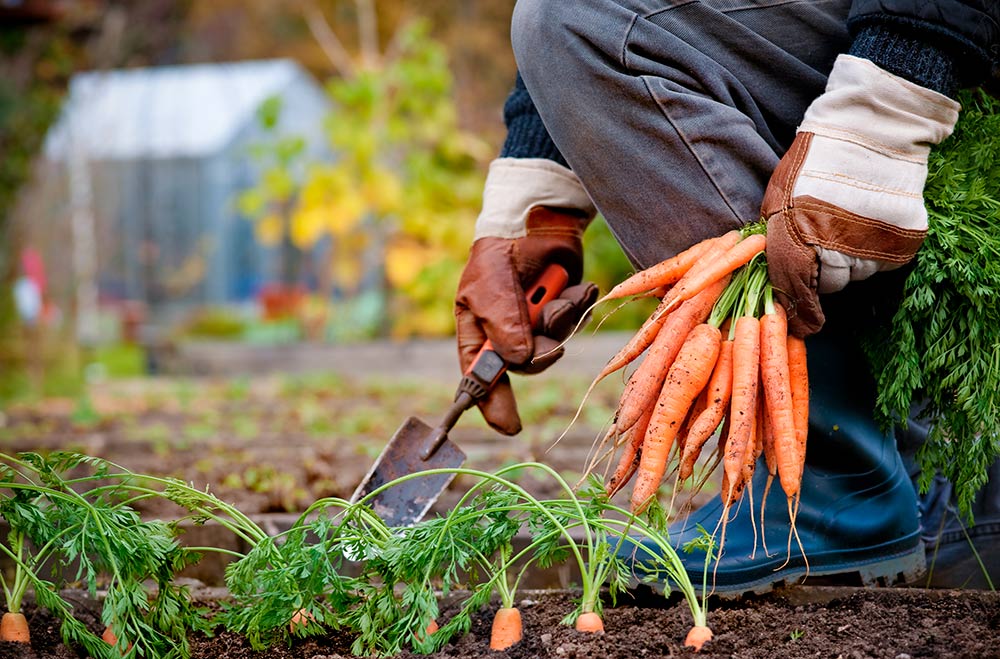 July is the month of “picking” not “planting”. Courtesy photo
July is the month of “picking” not “planting”. Courtesy photo
By Jolene Renfro
July is the month for “longing” not “landscaping” – longing for more water and cooler temperatures as we labor in our established landscapes. However, committed gardeners continue their garden chores as if weather conditions were perfect. Here is what they are doing:
Annuals
Summer has taken its toll on most spring flowers which are looking pretty bedraggled, but heat tolerant flowers are doing fine with adequate watering. Petunias do well with a light shearing, and a small amount of fertilizer watered in with plenty of water.
Marigolds can take the summer heat but may get spider mites. A strong spray of water directed upward under the foliage is usually enough to keep the mites from multiplying out of control.
Heat tolerant annuals can still be planted to add color to your landscape. For shaded areas, try impatiens, balsam, and calendulas. For sunny spots, plant celosia (cockscomb), copper plant, Joseph’s coat, Mexican sunflower, zinnia, and portulaca. For part shade-part sun, consider nicotiana, begonias, coleus and pentas.
Perennials
Perennials that had a great spring bloom are now looking like gardening failures. Shear them back about one third, sprinkle one cup of fertilizer per 50 square feet of bedding area, and water in well. The plants will reward you with new growth, and in a few weeks, will be back in bloom again. Salvia greggii, Indigo Spire salvias, and some lantana varieties get “leggy” in the summer and will respond to this treatment.
Vegetables
July is the month of “picking” not “planting”. Braving the heat to care for and harvest vegetables planted earlier is a formidable task. Check squash, cucumbers, okra and tomatoes everyday as the heat causes vegetables to mature rapidly and they quickly become overly mature and tough. Don’t discard rotten or diseased vegetables in the garden because they will become a source of disease for your still producing plants.
Related Articles
Instead, place them in the compost pile where the heat of composting will destroy disease-causing pathogens.
If you are thinking ahead to a fall garden, you can plant purple hull and blackeyed peas, pepper and eggplant seeds, and put tomato transplants in the ground this month, but you will need to provide plenty of water to keep them alive.
Trees, Vines and Shrubs
Trees, vines and shrubs, although they look rugged, are struggling to survive the heat and lack of rain. When there is not enough soil moisture, these plants begin to shut down their systems in order to survive, and with continued lack of water, they lose foliage and can die. Even if the plants survive dry conditions, the stress will likely create disease problems in the future. An example of a stress-induced disease is hypoxylon canker, affecting oaks and several other species. This disease will attack a weakened tree resulting in its death.
While we don’t want our trees to die from lack of water, we don’t want them to be entirely dependant on our water hose either. Frequent, shallow watering results in the development of a shallow root system for all plants, so prevent shallow roots by watering infrequently, but slowly and deeply. Once a week provide a good soaking (two inches of water) to an area twice the size of the branch spread. Remember to apply a thick layer of mulch away from the trunk and keep moisture-stealing weeds and grass pulled from under the tree canopy. Native species are built to take our summer droughts, and may survive with little or no supplemental watering, but woody ornamentals that were planted this past winter or spring are still working to establish a good root system and will need additional water.
Fruit and nut trees are setting their fruit buds for next year’s crop, so adequate moisture is critical. To insure that the fruit tree makes the best use of the applied water, keep suckers pruned off the trunk and remove those vigorous upright shoots (often called water spouts). Neither type of growth will ever produce fruit; they only rob the tree of water and nutrients.
Look for scale insects, mark the infected tree branch with bright tape, and come back and spray the tree with oil spray when the weather cooler, so the spray doesn’t scald the tree bark.
Lawn
Be on the lookout for chinch bugs in St. Augustine grass. Watch for straw-like, dead areas that enlarge over several days containing patches of grass that pull up easily from the roots. Apply a chinch bug control immediately to keep from having to replace your turf later on.
And Finally –
Take care of yourself by wearing a wide brimmed hat and sunglasses, applying a wide spectrum sunblock with SPF of at least 30 (some recommend a baby sunblock of 50 that has no skin irritating chemicals), and carrying a big bottle of cool water to sip on as you work.
You are a guest
or post as a guest
Be the first to comment.

